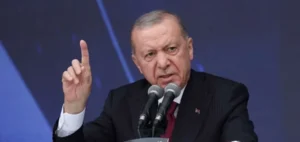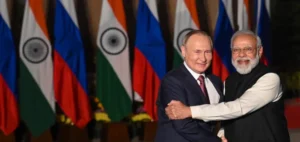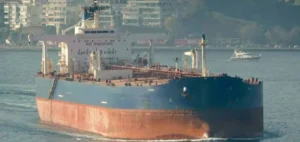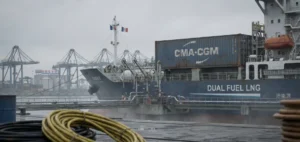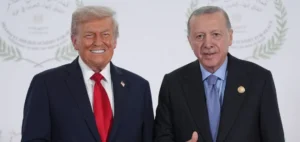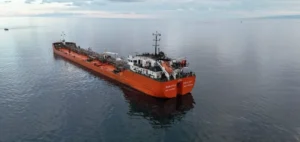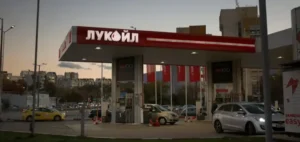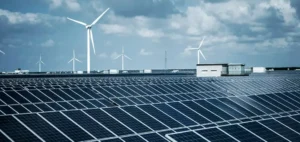The thesis of “sabotage” is highly favored to explain the spectacular leaks of the Nord Stream gas pipelines, an operation that is certainly complex but by no means beyond the reach of a competent army. And there are many of them in the area.
The hypothesis of simultaneous accidental failures seemed to be ruled out on Wednesday. But the method used remains unknown, as does the presumed author, the subject of many conjectures.
A monitored area
The three leaks identified since Monday are located in the Baltic Sea, off the Danish island of Bornholm, between southern Sweden and Poland. A highly monitored area for decades.
“In the past, the USSR based spy submarines with special engineering capabilities on the seabed,” recalls independent naval analyst HI Sutton on Twitter.
Since then, the Baltic States have gone over to the side of NATO. But the leaks occurred in international territorial waters where everyone can travel.
“Today, the Russian Navy has the largest fleet of spy submarines in the world. They are based in the Arctic. They would be able to degrade a pipeline in the Baltic,” says HI Sutton. But he also considered Tuesday the hypothesis “unlikely”.
A complex sabotage
The operation requires intervention at a depth of 70 meters.
“It’s a big deal. Damaging two gas pipelines at the bottom of the sea is a major event, so a state actor is likely,” notes Lion Hirth, professor at the Hertie School in Berlin, implicitly ruling out a terrorist or villainous act.
But a competent army knows how to do it. The area is “perfectly suited to pocket submarines”, a senior French military official told AFP, mentioning either the option of combat swimmers sent to lay charges, or that of the mobile mine or the underwater drone.
“The drone starts from a submarine that can stay several nautical miles from the target point. It drops its drone-mine, which sails at about 10 knots, close to the bottom,” he explains. “The target is fixed so it’s not very complicated.”
On the other hand, the hypothesis of the torpedo, useful rather for a moving target, is according to him less plausible.
The explosion “corresponds to several hundred kilos of TNT equivalent”, he said. The Norwegian Seismological Institute NORSAR, which specializes in detecting earthquakes and nuclear explosions, estimated the second detonation at 700 kilograms.
Operation not claimed
The chancelleries point the finger at Moscow, which itself does not exclude “any hypothesis” and recalls that the gas escaping from the pipelines belongs to it.
“The Baltic Sea is confined and shallow, and almost every movement is tracked and observed by the littoral states and their ships,” notes Julian Pawlak of Helmut Schmidt University in Hamburg. “Ships and submarines are capable of deploying covert combat divers” and other remotely guided underwater vehicles.
But nothing is impossible for an army experienced in the art of clandestine operations.
“It’s called a special naval operation. It’s not easy but it’s done,” summarized the French military source. “It looks like something well coordinated and well prepared.”
It may take time for the truth to emerge in a credible way. Some analysts observe that the vagueness benefits many actors.
But then who?
“It remains to be seen who has the paternity of the operation,” adds this military source. “Other countries have an interest in ensuring that the +pipe+ can never work again.”
In fact, the opponents of Nord Stream 2 have been numerous for years, led by the United States. On February 7, shortly before the Russian invasion of Ukraine, U.S. President Joe Biden spoke of the possibility of “ending” it.
Asked about the method used for an infrastructure under the control of his German ally, he replied: “I promise you, we will be able to do it. The video has been circulating extensively for 24 hours on social networks.
On Tuesday, Poland, Norway and Denmark inaugurated a strategic gas pipeline that will allow the Poles and Europeans to be less dependent on supplies from Moscow. “The era of Russian domination in the gas business is coming to an end,” said Polish Prime Minister Mateusz Morawiecki at the inauguration.
Two certainties at this stage: first, the event is related to the war in Ukraine. “Nato Maritime Command and allied ships are considering and preparing for hybrid activities, including sabotage of critical infrastructure, outside the primary objective of collective defense,” said Julian Pawlak.
Second, it creates additional instability in the European economy. “It’s a stark reminder of the vulnerability of our energy infrastructure,” said Lion Hirth.
He favors the Russian track. “If this is true, it is quite worrying. At the very least, it means that Russia (…) is sending the clearest possible signal that it will not deliver any more gas in the near future.”
Whoever attacked Nord Stream is also making it clear that they could strike at other energy infrastructures serving a Europe thirsty for gas and oil.



